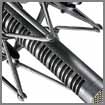
Achieving clear, crisp dialogue and sound effects on a film or video production is no easy task. Production Sound Mixing is a craft that requires a blend of technical expertise and proper tools.
The key to good sound gathering is to work from some basic strategies, and then work up from there.Anticipate instead of react. Don't limit yourself capability-wise to what you have been led to expect based on the production meeting. Things often change at the last minute, and producers/directors are notorious for not bothering to inform all of the crew. Be prepared for as many contingencies as possible.
For instance, if the shooting schedule calls for only interior interviews that day, I would still bring along a good exterior shotgun mic and windscreen just in case someone decides that a long "walk & talk" against a scenic city background is visually more interesting than a talking head in a cramped office.
Think in terms of what is known as the Hierarchy of Microphone Techniques. This hierarchy serves as your starting game plan in approaching a scene in terms of microphone selection and utilization.
Here is a summary of the Hierarchy:
- Overhead boom.
- Boom from underneath.
- Boom mics as plant mics.
- Lavalier mics as plant mics.
- Lavalier mics as body mics.
- Lavalier mics, as wireless or radio mics.
Now, let's examine these options in detail.
1) Overhead miking from a fishpole or studio boom is the most favored technique in the feature/TV/commercial industry. It is probably the best choice 90% of the time.
Generally, overhead miking will yield the most natural sounding dialogue with the least amount of mixing and editing effort.
It provides a pleasant blend when there are multiple actors involved. Two, three, even a small group of people interacting can all be recorded from a single mic.
A mic on a fishpole or boom allows for a fair amount of physical activity and movement by the talent. Actors are free to enter and exit a scene, move around, jump around, climb around, etc. There are no trailing mic cables to inhibit their range of motion.
An overhead mic will pick up sufficient sound effects, footsteps, and hand-prop noise to give the soundtrack a full texture. Because the faces are closer to the mic, dialogue will dominate the track, but other sound effects will still be audible.
Audio perspective is easier to maintain with an overhead mic. On a wide master shot, the mic tends to be higher so that the resulting dialogue seems thinner and more "distant". On close-ups, the mic can be lowered giving the sound much greater presence and "near-ness" to the screen.
But what if there are physical obstructions in the set that prevent deploying a microphone from overhead?
That brings us to the next option: 2) Boom miking from underneath. The boom mic can be fishpoled up at the talent from knee, thigh, or waist level with good results. The sound will be slightly more bassy than miking from overhead, but still quite usable and acceptable. Note that a mic aimed up at a person tends to pick up more of the chest cavity, thus accounting for the increase in bass.
Personally, I find that it is much more difficult to boom from below, due to the presence of set furniture or the choreography of foreground persons. Camera operators also have to be much more careful, since it is more likely to widen the frame to show more of an actor's torso than to show more empty headroom above. Never-the-less, there will be many shots where miking from below is the simplest solution.
